Ready for some time travel? In European history, the Middle Ages (or medieval period) spans the 5th to 15th centuries, from the collapse of the Roman empire to the beginning of the Renaissance. That’s a lot of history! So if you’re planning to step into your time machine and head off to medieval times, here’s what you’ll need to know before you go, in roughly chronological order. (Oh, and do plan your visit to avoid the Black Death.)
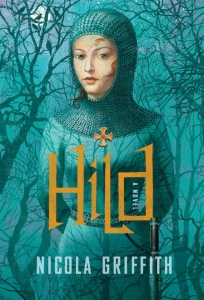 Hild
Hild
Author: Nicola Griffith
The action is slow, but the writing is gorgeous in this vibrant, painstakingly detailed portrait of life in Britain in the 7th century A.D. This is the story of the early years of the woman who would become the real-life St. Hilda of Whitby. During the Middle Ages in Britain, many lords and kings rule over their tribes and small kingdoms, constantly warring and striving to dominate the others. Many still believe in the old pagan gods and are deeply superstitious, but Christianity is slowly gaining converts. Hild is the daughter of one of those murdered kings, now living under the protection of her uncle, King Edwin of Northumbria. Clever and perceptive, Hild is pushed by her ambitious mother into the privileged but risky position of king’s seer. Hild must walk a dangerous line by becoming a valuable enough asset to keep around, while never appearing powerful enough to present a political threat of her own. Through Griffith’s sensory-rich prose, we can taste the freshly churned butter, feel the threads of a woven cloak, and admire the glint of a warrior’s metal armband — timeless details that anchor us in a complex and deeply unfamiliar era.
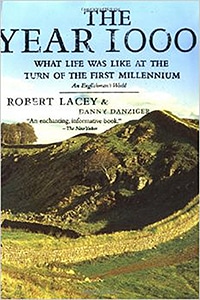 The Year 1000: What Life Was Like at the Turn of the First Millennium
The Year 1000: What Life Was Like at the Turn of the First Millennium
Authors: Robert Lacey and Danny Danziger
For the casual medieval time traveler, The Year 1000 is probably the best place to start. The book is divided into 12 chapters, one for each month of an illustrated circa-1020 work calendar, so each chapter discusses topics relevant to the time of year. Written in an accessible, casual voice for the lay reader, the book talks about daily life for ordinary people, including diet, clothing, personal hygiene, social structures, sex and marriage — all the good stuff. Some things may surprise you: for example, we associate medieval times with feudalism, but that practice didn’t start until the Norman invasion of 1066. Engla-lond (as it was then called) enjoyed prosperity and plenty, but suffered from frequent Viking raids and weak royal leadership. The period-accurate drawings illustrating the calendar are lively, delightful portraits of peasant life with flashes of timeless humor.
 1215: The Year of Magna Carta
1215: The Year of Magna Carta
Authors: Danny Danziger, John Gillingham
Jumping forward a couple of centuries, we have 1215: the Year of Magna Carta, written by one of the co-authors of The Year 1000. As every history student knows, the Magna Carta was a huge historical, political, and legal turning point. But what was life actually like for the citizens of 1215? This book covers the day-to-day details of everyday life for the nobility, the peasants, and the monasteries under the rule of King John. Although it uses the Magna Carta as a reference point, this book isn’t really about that document, so don’t expect a lot of boring history — it’s mostly about the social structure and culture of the period.
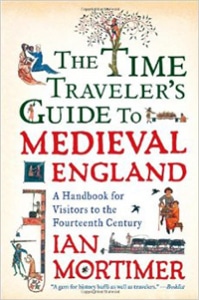 The Time Traveler’s Guide to Medieval England
The Time Traveler’s Guide to Medieval England
Author: Ian Mortimer
Specifically written for medieval time travelers, this is probably your most useful handbook as you zoom backwards in time. The informative, wryly funny chapters cover all the basics you’ll need to avoid sticking out as a 21st-century denizen, such as What to Eat and Drink, What to Wear, Traveling, Where to Stay, Health and Hygiene, and The Law. Mortimer uses contemporary sources such as letters, household accounts, and journals to disprove some of our mistaken assumptions about medieval society, and to ensure that you don’t commit any embarrassing gaffes while visiting the 14th century.
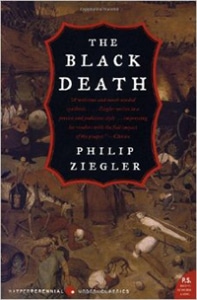 The Black Death
The Black Death
Author: Philip Ziegler
No medieval reading list would be complete without something about the bubonic plague! The Black Death struck in the 14th century, killing an estimated one-third of the population of Europe in just three years. Focusing on the plague’s effects in England, Philip Ziegler pulls together contemporary accounts and later research to give a single-volume overview of the massive social upheaval caused by the plague. He covers medieval medicine and hygiene, ineffective plague treatments, and imagines the plague’s progress through a fictitious village to give readers an idea of what it was like to live through (and probably not survive) the plague.
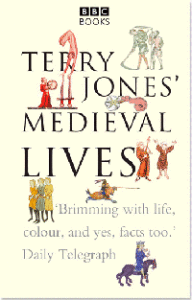 Terry Jones’ Medieval Lives
Terry Jones’ Medieval Lives
Author: Terry Jones
You may know Terry Jones from Monty Python, but he’s also a pretty devoted scholar of medieval history and has written several books about Chaucer and the Middle Ages. In Medieval Lives, Jones looks beyond the tired stereotypes of princesses in pointy hats and knights in shining armor to get at the historical truth. He examines familiar archetypes like the Knight, Peasant, Damsel, Monk, Outlaw, King, Merchant, and Physician, exploring the facts and dispelling the myths about the medieval period. But if you prefer to laugh while you learn, there’s also an entertaining BBC companion miniseries available on DVD that’s a great introduction to the Middle Ages for viewers of all ages.
 Life in a Medieval Castle
Life in a Medieval Castle
Authors: Joseph Gies, Frances Gies
Husband-and-wife team Joseph and Frances Gies have written dozens of historical books about medieval history, but this one is about living in a castle, which is awesome. This short overview focuses on one particular castle on the England-Wales border and then discusses it in the larger context of medieval Europe. You’ll learn about the daily routines of the highborn and lowborn, food and entertainment, military defense and architecture, and the role of nobles and knights in these micro-societies. Photos and diagrams show the castle’s construction, and there’s even some medieval sheet music! At the back of the book, you’ll find a list of historically significant castles constructed in the 9th through 15th centuries, in case you’re planning a European trip and want to visit a real medieval castle (and who wouldn’t?).
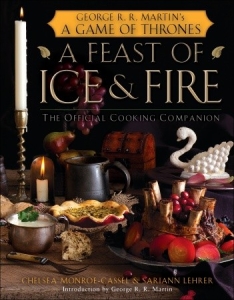 A Feast of Ice and Fire
A Feast of Ice and Fire
Authors: Chelsea Monroe-Cassel, Sariann Lehrer
OK, so this is actually a modern-day cookbook based on the Game of Thrones series. But you’ll need something to snack on while you’re working your way through all these medieval time-traveling reads, right? And until we actually invent a time machine, serving up the rich, meaty delicacies of centuries past is the best way to make the Middle Ages spring to life before our eyes (and stomachs). While you don’t need to be a fan of the show (or the books) to enjoy this cookbook, its organization will make more sense if you’re familiar with its fantasy world, as each chapter deals with a different region of Westeros and its typical fare. Taken as a whole, though, they offer a pretty decent insight into what you might expect to find on medieval feasting tables. Modernized adaptations and substitute ingredients are suggested, to appeal to modern palates and cooks who don’t want to pay a fortune for, say, snake meat. I’ll pass on the honey-spiced locusts, but the beef and bacon pie or lemon cakes sound delicious in any era. Read our full review.
More time-traveling fun on Readers Lane:
- Spring 2020 Book Preview - May 15, 2020
- Winter 2020 Book Preview - January 1, 2020
- Fall 2019 Book Preview - September 26, 2019

Leave A Comment